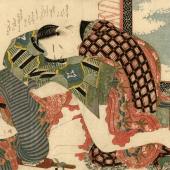Travesty Art
From antiquity to the Middle Ages theater roles were played exclusively by men - even if women were shown. This fact already coined the origin of the travesty art. Although at this early time, the actors who embodied women, were rather little regarded, but a few of them obtained great fame.
The infamous image of the former drag artists changed through the theater revolution in the UK of the 16th century. In the heyday of the Elizabethan Theater, (1559 - 1625) women were not welcome on the professional stage. So-called boy actors have played these roles. However, this changed quickly, and the first professional actresses played starting from the Stuart Restoration on (from 1650) important roles in theaters. Trouser roles became fashionable and the tide turned. There were already first roles for Fauen in men's clothing. At this time, about 1750, some actresses have even been renowned for her men's roles.
With the establishment of the profession of actress, the male travesty changed towards the idealization or parodic oversubscription of gender roles. In the early 20th century, the term was coined "travesty of art". It was the travesty, and it was and it still not is tied to a particular sexual orientation.
Travesty artists prefer to imitate stars or develop a parody out of them. However, some travesty artists create their own characters. There are eccentric divas imitated or incorporated into her own performances. In the drag shows mostly music and singing get interlaced. In Germany, travesty artists like Lilo Wanders or Olivia Jones are well known. Internationally, travesty stars like Ru Paul (USA) or Dame Edna are (AUS) to be mentioned.




